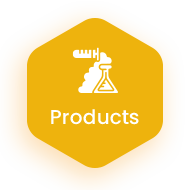Brominated butyl rubber
Brominated Butyl Rubber, a specialty synthetic elastomer, is derived from butyl rubber through a bromination process, where bromine is introduced to enhance certain properties. This rubber variant is known for its excellent impermeability to gases, including air and moisture, making it particularly suitable for tire inner liners and other applications requiring exceptional barrier properties. The bromination process imparts improved resistance to heat, weathering, and chemicals, expanding its utility in challenging environments.
This rubber type finds applications in various industries such as automotive, construction, and pharmaceutical, where its unique combination of low gas permeability, high thermal stability, and resistance to aging is highly valued. Brominated Butyl Rubber is often employed in the production of tubes, seals, gaskets, and pharmaceutical stoppers, where maintaining a hermetic seal is critical for optimal performance and longevity.

Functions and Characteristics
Basic Characteristics
| Property | Unit | Specification | Test Method |
| Appearance | / | White to amber | Visual |
| Mooney Viscosity ML (1+8) 125C | MU | solid 32±4 | GB/T 1232. 1 |
| Bromine content | wt% | 2.0±0.2 | JingBo Method |
| Volatiles | wt% | ≤0.5 | GB/T 24131 |
| Ash content | wt% | ≤0.7 | GB/T 4498. 1 |
| Stabilizer Content | wt% | 1.2- 1.6 | Jingbo Method |
| Antioxidant (non-Staining) | wt% | ≥0.03 | Jingbo Method |
Curing Characteristics:
| Property | Unit | Specification | Test Method |
| FL | N.m | 2. 1±1.0 | |
| FH | N.m | 6.9±2.0 | Compounding method: ASTM D3958 |
| s1 | min | 2.9±1.2 | Test condition: |
| T50 | min | 5.3±1.5 | SH/T 1717-2008 6.2 |
| T90 | min | 8 4±2 0 | Test method: GB/T 16584 |
- Appearance:
The rubber presents itself in a white to amber color, offering a visual indicator of its quality and purity. - Mooney Viscosity:
The Mooney viscosity at 125°C (ML 1+8) is specified at a solid 32±4 MU (Mooney Units), indicating its consistency and flow characteristics during processing (GB/T 1232.1). - Bromine Content:
With a bromine content of 2.0±0.2 wt%, this rubber variant achieves a desired level of bromination, enhancing its resistance to heat and chemicals (JingBo Method). - Low Volatiles:
The rubber maintains low volatiles at ≤0.5 wt%, ensuring minimal gas emissions during processing (GB/T 24131). - Ash Content:
The ash content is limited to ≤0.7 wt%, indicating a low level of inorganic residue after combustion (GB/T 4498.1). - Stabilizer Content:
Stabilizer content falls within the range of 1.2-1.6 wt%, contributing to the material’s resistance to degradation over time (Jingbo Method). - Antioxidant (Non-Staining):
Presence of non-staining antioxidant is specified at ≥0.03 wt%, contributing to the material’s longevity and resistance to oxidative aging (Jingbo Method).
Major Applications
O-Rings and Seals:
The rubber's resistance to aging and heat, coupled with its sealing properties, makes it suitable for the production of O-rings and seals in various industrial applications.

Coated Fabrics and Protective Coatings:
Its impermeability to gases and excellent durability make it suitable for coated fabrics used in industrial covers, awnings, and other protective coatings.

-
Applications
It is widely used for tire products, shoe soles, etc.
-
Package
34kg per bale,individually packed in low melting PE/EVA/(EVA+PE)
composite film. Plywood case or IBC,36bales in total. -
Safety
The solid high-molecular polymer with stable and reliable performance, harmless to humans, animals, plants as well as ecology environment. For any relevant safety data, see details in MSDS.
-
Storage
The item must be stored in dry and ventilative warehouse and kept out of direct sunlight, moisture and contamination. The storage period is 24 months.
In Needs of Rubber Vulcanization Accelerators Solution?


